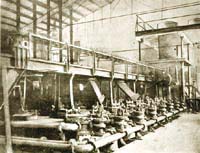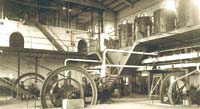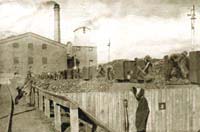 Eric Shackle's Column
Eric Shackle's Column
By
Eric Shackle
Queensland Cane Growers Should Switch to Sugar Beet
North Queensland sugar cane growers, hit by a mysterious virus which is attacking their canes, should follow India’s lead, and switch to growing sugar beet.
“A sweet change is gradually entering the farms of Bathinda,” says a recent report in the Indian Express. “Farmers are commercially testing a crop they have previously known as not-a-very-popular ingredient at their dinner table – the sugar beet.
“It is being raised by about 40 farmers, particularly in Jodhpur Romana in Bathinda district , for supply to a factory in Tarn Taran that extracts sugar from the sugar beet and not sugarcane.
“The farmers say transportation cost of sugar beet is less than that of sugarcane. The return they get from sugar beet, 145 rupees a quintal [$2.52 US per 100 kilograms] is almost as much as they would get for sugarcane. The latest FRP for sugarcane was 170 rupees [$2.95 US] a quintal.
“They can have possibly two beet crops a year and double their income because sugar beet is ready for harvest in six months compared to the 10 months the sugarcane would take.
“The yield of sugar per quintal is also higher for sugar beet. Agriculture development officer Dr Baljit Singh said, ‘A quintal of sugar beet yields about 40 per cent sugar as compared to 15 – 17 per cent from sugarcane. Abroad, sugar beet is used for making sugar. In Punjab the first factory was set up only last year.’
“Dr Singh said, ‘In sandy areas of Bathinda, sugar beet farming succeeds because it needs less water. It is a good option to come out of the paddy-wheat cycle. All farmers have been given pick-up facilities by the mill, so they don’t have to bother about transport. We got this farm diversification done on trial after supplying seeds, and are hopeful that in the coming year, the area under sugar beet will increase.’”
Hundreds of miles south of Queensland, Victorian farmers around Maffra in Gippsland have grown sugar beet for well over a century.
The story of Maffra's sugar industry begins in the early 1890s. Although there had been other minor attempts to establish sugar production from beets in Victoria from as early as 1866, the local effort was by far the most serious.
The Maffra Sugar Beet Company was registered in 1896, with capital of £70,000. Building of the factory commenced in the following year
and was completed in 1898.

|
Interior (1)
|
The Colony's first 500 tons of sugar were refined that year.
Unfortunately drought seriously affected production and the Company was unable to continue profitably, so the Victorian Government took over the factory in 1899. It was kept in 'mothballs' until 1910, when the industry was revived following a report from a Dr Walter Maxwell.
| Interior (2) |
 |
To ensure a continual supply of raw material, the Government insisted that each farm on the newly developed Closer Settlement schemes in Boisdale and Kilmany had to grow a specified quantity of beet, originally ten acres. Despite another severe drought in 1914-15, the factory showed its first of many profits in 1917.
The Glenmaggie irrigation scheme was commenced in 1919 on the Macalister River, initially to provide water for the beet farmers. It was only later that this same water supply became so important to our dairy industry.
The sugar-beet industry flourished for the next twenty years. In 1925 the factory was actually upgraded and expanded in anticipation. The peak production occurred in the 1939/40 season.

|
Collecting (1)
|
World War II eventually brought about the end of the industry as the essential labour force was taken away. Dairying had become far more profitable and farmers post-war were reluctant to re-engage in the more difficult and less rewarding beet growing.
Collecting (2) |
 |
The factory finally closed in 1948; the machinery was auctioned off in 1953; the main building was demolished in 1964.
Maffra Sugar Beet Factory c1926
Power plant |
 |
All that remains is a large brick store beside the Sale Road railway crossing and the wooden office, which has been moved about 1km from its original site to become the main part of the Sugar Beet Museum complex.
For a more detailed history of the Beet Industry in Maffra see The Beet Sugar Industry 1894 to 1948 which may be ordered from the Society.
Photographs courtesy of the Maffra Sugar-beet Museum
Click on author's byline for bio and list of other works published by Pencil Stubs Online
Author's Blog.
|








